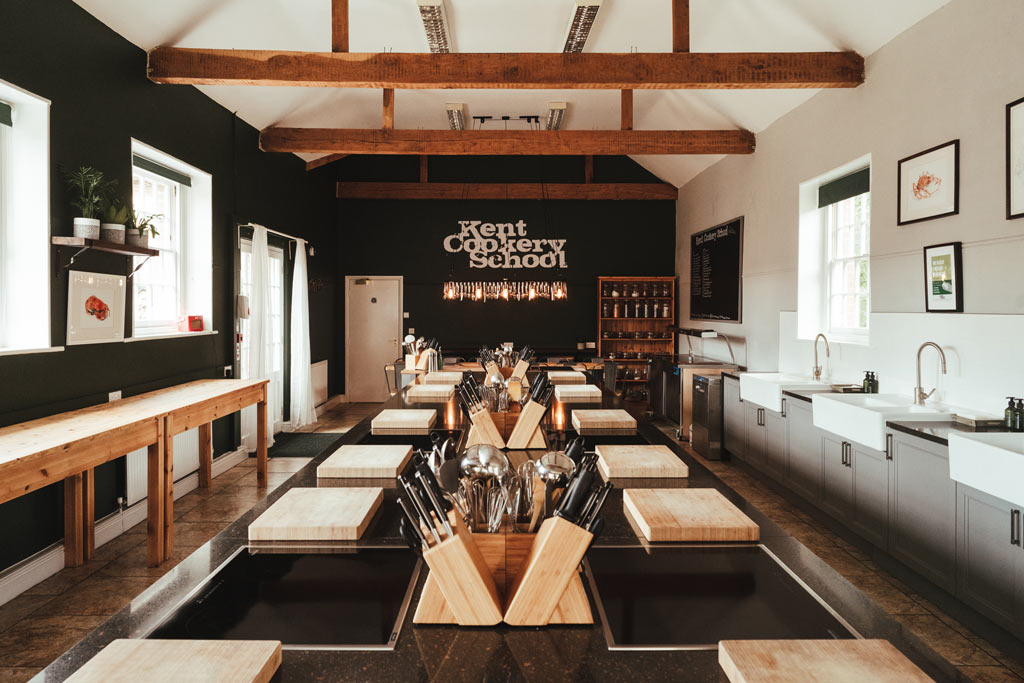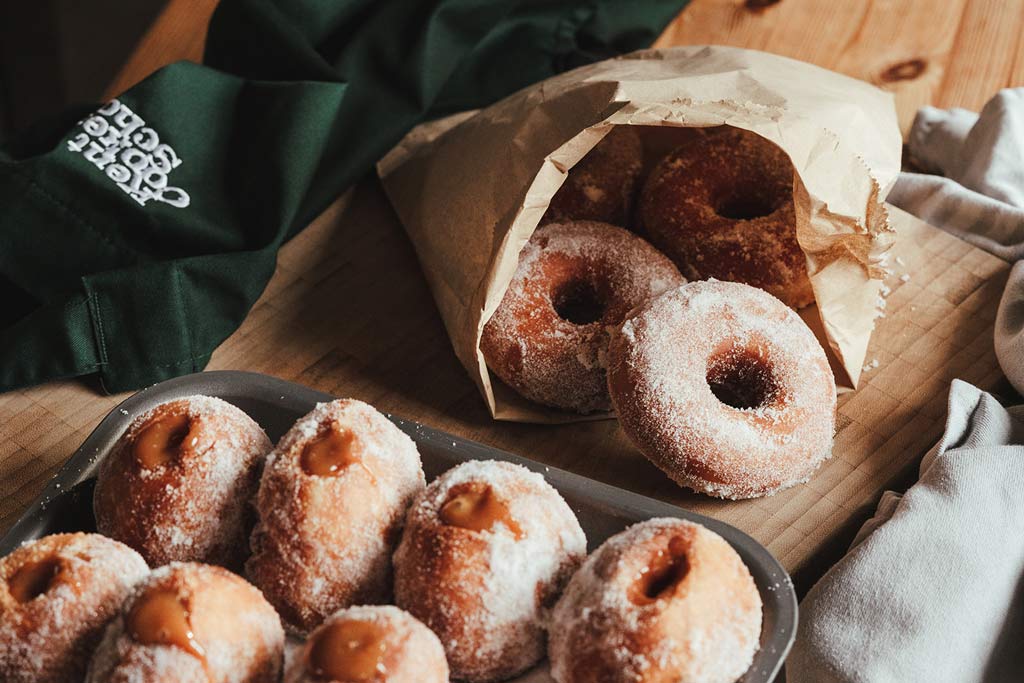Forget “How long?”, ask “How hot?”: The importance of temperature measurement in cooking

“The number one question I get asked is ‘how long?’, and it’s the one question I hate,” says James Palmer Rosser, chef and director at Kent Cookery School. In his classes, Rosser teaches recreational enthusiasts to cook at a professional level. He explains that his students tend to share the erroneous belief that cooking well is a matter of timing, while in actuality, it is achieving the right temperature that will ensure a consistency in quality.
The Kent Cookery School was founded in 2012 and is based in the picturesque setting of the Mersham-le-Hatch Estate, bordering a 190-acre deer park and 1000-year-old woodland. Visitors come to learn a subject that they’ve got an interest in but perhaps lack confidence navigating their way around the kitchen. The objective of the School is that visitors can return home and replicate what they’ve learnt throughout their time there. But fundamental to that is temperature. “There are so many variables when it comes to cooking,” adds James. “People have different cookers, kits, utensils, and even kitchens. But we try to emphasise that temperature is critical when replicating what they’ve learnt here.”
Temperature is a critical measurement for ensuring the safety and quality of many products, whether monitoring temperature at delivery, storage, cooking or re-heating. As James confirms, “temperature probes are just as essential as knives, pans, or any other tool in the kitchen.”
James and his colleagues at the Kent Cookery School are attempting to educate their visitors that everyone’s tastes and requirements for a satisfactory plate of food differ. This can be a challenge when hosting dinner parties for a large group, particularly if it’s something an individual is unaccustomed to. James feels this is where temperature control and monitoring comes into play. “I like my lamb medium-rare. But another guest might like their’s well done. As a host, I’m not going to tell anyone how they should have their lamb cooked. Also, well done doesn’t mean it has to be cooked to hell and back. You see chefs cook a lamb and then leave it in the oven until it gets a core temperature of 75 ºC and then leave it to rest. This is the sort of thing we are trying to educate our visitors with. And it goes beyond meats. From baking to fish, everything is determined by temperature.”

The Kent Cookery School uses ETI’s Thermapen Classic, which incorporates a large digital display with a precise read-out of temperature over the range of -49.9 to 299.9 °C. It is handmade in ETI’s Worthing manufacturing facility and comes with a guaranteed accuracy of ±0.4 ºC and a super fast three-second temperature reading.
“These are the numbers we want our visitors to understand in a cooking capacity,” adds James. “Let’s take the barbecue for example. People should be going away and asking with confidence, ‘how do you want your steak cooked?’ on the barbecue. The Thermapen helps immensely with this. It is consistent, accurate, and made to last.”
The Thermapen model has always been robust. In professional kitchens where the environment is fast-paced, they are often thrown about as chefs react quickly to orders and rush to get plates of food to the pass. Therefore, it may come as a surprise that they can sometimes be mishandled even at the Kent Cookery School. “Sometimes they do get abused, dunked in water, dropped, because you’ve got beginners who don’t understand the true value of the product,” says James. “But they are designed for all those misplacements. They are so robust. The key is again in educating them. I’m confident that once they’ve used them here, they won’t be able to cook at home without them.”
So much is the popularity of the Thermapen at the Kent Cookery School that James and colleagues use them in every class. From measuring the temperature of meat, bread, cakes and sugar to cooking the perfect macaron, James always encourages his visitors to buy a Thermapen if they haven’t already got one. “As soon as you pick up the Thermapen, you know it’s good quality,” adds James. “If you pick up a good knife, you don’t have to describe it, you just know it’s a good knife. When you open your Thermapen, it’s not loose and rattly, it’s firm. And when you open the box and get your certification that it’s been calibrated properly then you know the product is spot on.”

Handling it as a beginner
Kent Cookery School welcomes approximately 70 new students each week, many of whom are navigating their way around a kitchen for the first time let alone holding a food temperature monitor. When it comes to protein, the primary reason people use a thermometer is to ensure the meat is cooked thoroughly. However, there is a greater emphasis on poultry, especially if the internal temperature hasn’t reached the safety mark of 75 °C. Thermometers are widely used to ensure food quality can be replicated. James adds: “If you are roasting a chicken, you must emphasise the importance of finding the thickest point because you’ll see someone trying to take the temperature of a chicken wing, and that’s not going to cut it. The Thermapen’s sensor is located in the probe tip, so you must ensure it’s placed in the thickest part of the meat you’re measuring because that would usually be the part that takes the longest to cook. A turkey breast at Christmas is a great example of using the thickest part of the meat to ensure it is cooked.”
But isn’t just the experience of the Kent Cookery School’s visitors which is made easier thanks to the use of the Thermapen. James himself says that his role as a teacher has been streamlined since they started using the product. “In our macaron class we had some cheaper thermometers and it was just horrible,” he says. “The product has helped me. When you’ve got 12 people cooking who aren’t always checking in the right areas, I no longer have to go around the class with my own advanced thermometer to show them because they all have one. I feel more confident knowing that they’re all going to be able to deliver great results and I feel more comfortable knowing that they’ve reached those temperatures.”
You might also like:
Beekeeping & Hive Temperatures with SW Honey Farms
Coffee Temperatures: Beans to Brew with Kendricks
Baking Pies with Piglet’s Pantry
Images Ⓒ Saltwick Media